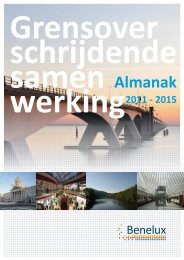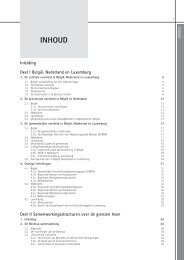The North Seas Countries' Offshore Grid Initiative - Initial ... - Benelux
The North Seas Countries' Offshore Grid Initiative - Initial ... - Benelux
The North Seas Countries' Offshore Grid Initiative - Initial ... - Benelux
Create successful ePaper yourself
Turn your PDF publications into a flip-book with our unique Google optimized e-Paper software.
some countries requiring self-sufficiency, while others rely to some extent on the regional<br />
market to meet their adequacy requirements. For hydro-dominated systems, energy<br />
margin indicators are generally required in addition to capacity-based reserve margins.<br />
Because of the diverse requirements within the region, judgement on the adequacy of the<br />
Reference Scenario was made based on a reserve margin with the help of TSOs’ expertise<br />
from all countries. This confirmed that regional adequacy was met.<br />
Figure 3-5: Installed capacity as a ratio of the peak demand by country and for the total NSCOGI Region<br />
(2030). <strong>The</strong> horizontal blue line represents the typical target reserve margin of 1.15 to 1.25.<br />
NB: <strong>The</strong>se results are based on a hypothesis on future capacities by fuel type, validated by<br />
administrations in summer 2011. <strong>The</strong>y do not take account of any changes in energy mix<br />
that may have been decided since that time.<br />
<strong>The</strong> result of the assessment is presented in Figure 3-5. It shows that reserve margin in<br />
the region varies between 0.95 and 1.55 with margins smaller than 1.1 occurring in<br />
Denmark and Ireland. For the entire Region a margin of 1.32 is reached.<br />
Based on these results it can be concluded that the Reference Scenario includes enough<br />
resources in the Region to guarantee security of supply from a generation adequacy point<br />
of view. Some countries with low reserve margins may have to rely on resources outside<br />
their national borders or on their own wind or solar resources to guarantee security of<br />
energy supply. However sufficient cross border capacity is available to facilitate this.<br />
<strong>The</strong> market simulations made later on in the process, in which generation adequacy was<br />
assessed in much more detail, have confirmed these preliminary adequacy assessment<br />
results.<br />
Page 22 of 142










